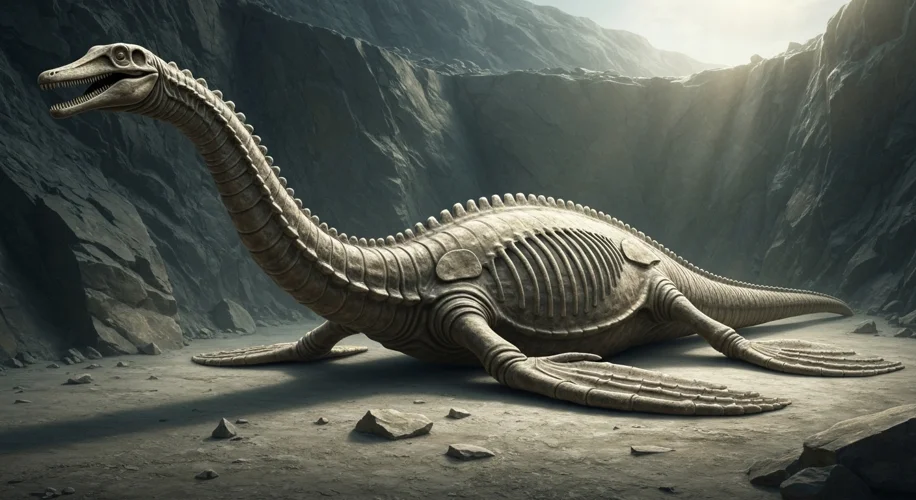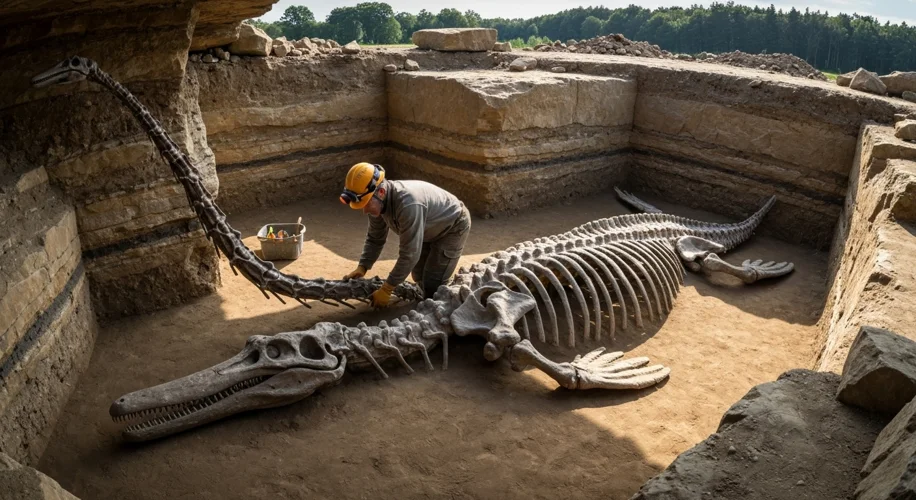The world of paleontology is abuzz with excitement following the discovery of a fossil in Germany that has been hailed as the ‘most remarkable’ of its kind. Unearthed from the ancient seabeds of the Jurassic period, this fossil represents a previously unknown species of marine reptile, a creature that once ruled the ancient oceans.
For millions of years, the seas of what is now Germany were teeming with life, a vibrant ecosystem far removed from the terrestrial landscapes we know today. During the Jurassic period, roughly 201 to 145 million years ago, colossal marine reptiles dominated these waters. This era was a golden age for creatures like ichthyosaurs, plesiosaurs, and pliosaurs – formidable predators that inspired awe and terror in equal measure.
This newly discovered fossil belongs to a long-necked plesiosaur, a group of marine reptiles characterized by their immense size, long necks, and paddle-like limbs. While plesiosaurs are well-documented, the details of this particular specimen suggest it is a completely new species. The preservation quality is exceptional, offering paleontologists an unprecedented glimpse into its anatomy.

The researchers who unearthed the fossil described it as “most remarkable” due to its completeness and the sheer amount of anatomical detail preserved. Such finds are rare, and they provide invaluable data for understanding the evolution and diversity of Jurassic marine life. Each bone, each fragment, tells a story of a world long vanished, a testament to the relentless march of time and the enduring power of fossilization.
What makes this discovery particularly significant is what it reveals about the biodiversity of Jurassic seas. The existence of a new species indicates that our understanding of these ancient ecosystems is still incomplete. It hints at the possibility of further discoveries that could rewrite our knowledge of prehistoric marine life. The sheer scale and unique features of this creature suggest it occupied a distinct ecological niche, potentially a top predator in its local environment.
The implications of this find extend beyond simply adding a new name to the roster of extinct species. It offers crucial insights into the paleoenvironment of Jurassic Germany, providing clues about water conditions, prey availability, and the broader marine food web. By studying the fossil, scientists can infer the creature’s diet, its mode of locomotion, and even its behavior. For instance, the shape of its teeth can indicate whether it was a fish-eater or a hunter of larger prey. The structure of its flippers might reveal how efficiently it moved through the water.
Moreover, this discovery fuels the imagination, connecting us directly to a distant past. It reminds us that our planet has a history far richer and more complex than we can often comprehend. The ‘sea monster’ from Germany, now resurrected through the careful work of paleontologists, stands as a powerful symbol of the unknown wonders that still lie hidden beneath the earth, waiting to be discovered.
The scientific community will undoubtedly spend years analyzing every aspect of this extraordinary fossil, piecing together the life story of this ancient ocean giant. It’s a thrilling reminder that the echoes of the past are always with us, waiting in the stones, ready to tell their tales.

